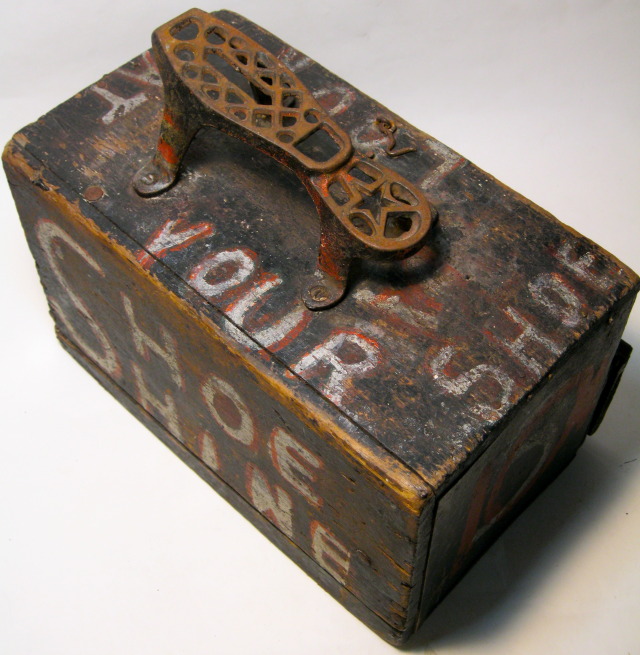The most interesting part of a shoe-shine box isn’t the actual box, but the wild story that is behind it. Shoe shiners where a diverse group, but they always had one thing in common; a crazy attitude that was needed to be a shiner.
Take for example this 1920’s piece. At a first glance, it might just seem like a very simple box. A closer look however shows the story of a man who shouldn’t be in customer service. Above the shoe rest is written “look at your shoe”, meaning the customer has to stare at the floor the whole time and not make any eye contact. Below that on the hatch he has written “mind your own damn business”, as if the customer is going to be nosy while staring at the floor.
Even the actual red lettering seems angry. He originally had the price written at 5 cents, but wrote 10 cents on top without covering up the original price. It’s like the discount stores that show the manufacturer’s price and then their cheaper price, but the exact opposite. He wants double his money, and doesn’t care who knows.
Who knows if this actually worked, maybe the customers thought the attitude was funny, or appreciated his no-b.s. approach. Or his shines where just so good that he could take the “Soup Nazi” tactic. Either way it’s clear you needed to stick out to make it in the business.



